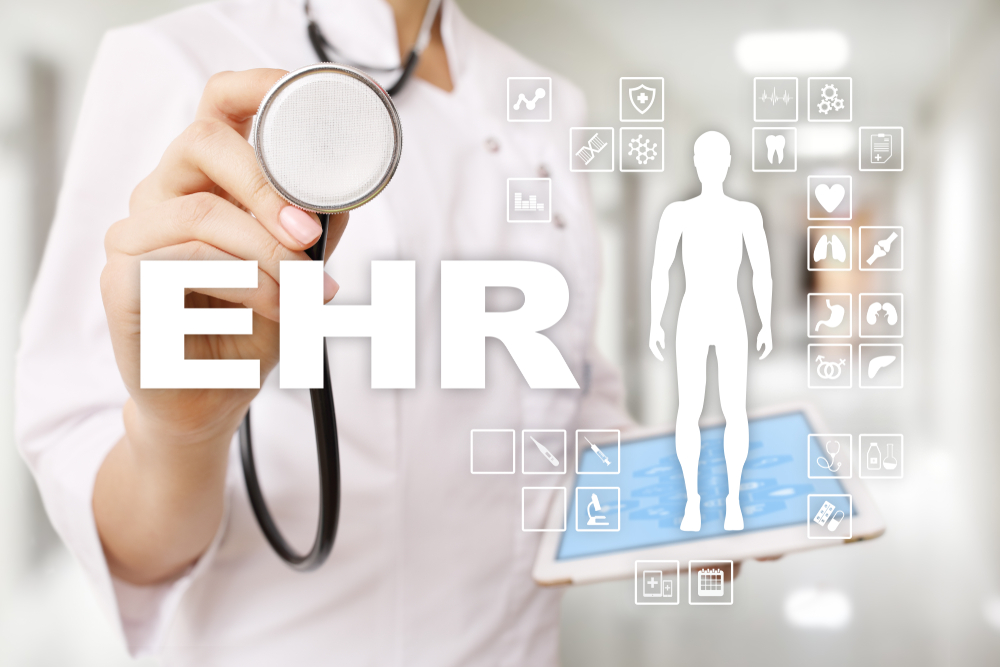9 Essential Features for Your EHR

The search for an electronic health record software can quickly turn into a deluge of features that makes it difficult to separate the wheat from the chaff. At the end of the day, practitioners need an EMR that will enhance their clinical workflows instead of impeding them. No amount of features will make up for an impenetrable user experience.
However, whether you’re finding your first EHR software or preparing to switch to a new one, there are some important features to key in on to ensure a more productive experience.
1. Mobile Friendly and Cloud Based
The flexibility provided by a mobile friendly EMR platform is a must-have for a modern medical practice. Being able to use a fully functional EHR on your mobile device allows you to document clinical notes without tying yourself to a desktop. It also enables you to access patient charts, order lab work, imaging and send prescriptions anywhere at any time from your phone, computer or iPad.
2. Customizable Forms and Templates
That spirit of flexibility should extend to the features you will be using everyday. A good EHR will have a library of specialty specific forms ready for you to use out of the box. A great one will give you the ability to customize medical forms to fit your preferred workflows. Make sure to sign onto a software that can adjust to what works for your practice.
3. Intelligent Charting Tools
Once you have set up the clinical charts to your standards, you should be able to navigate them with ease. For example, look for an electronic medical record with dynamic photo charting features. Features like this allow you to take photos, upload them to the chart and annotate them.
Save even more time with medical-speech-to-text that can adapt to accents and speech style, ensuring you can take quick, accurate notes. Finally, you can streamline your note-taking even further by saving commonly used notes as macro buttons. These buttons speed up your charting while also improving their accuracy for billing and claims purposes.
4. Integrated Labs
Top EHR companies should have a large pool of labs, both locally and nationally, with which they integrate, so that you can easily submit lab orders from your device and have results uploaded directly into your patient’s chart. This can also cut down on redundant orders. If another provider has ordered the same test recently, you will be able to access the results as well.
5. eRx with EPCS
Providers need to be able to send electronic prescriptions including controlled substances to patients’ preferred pharmacies from your iPhone, iPad or computer. An eRx feature needs to fit seamlessly into a provider’s workflow.
While this ease of use is a great benefit, the software also must be fully compliant with DEA, NIST and Superscripts requirements. Look for a service with two-factor soft token authentication for added security on this tool. That way you can send prescriptions from anywhere with the highest level of security and fraud protection.
6. Billing and Coding
Medical billing can be a puzzling process which is why you need an EHR with billing tools that simplify those tasks. This billing software should be proven to help boost clean claims rates by eliminating areas for small human errors. When you enter patient information once, it should pass straight through to the billing software.
Then, providers should be able to easily view billing reports and analytics in an integrated billing dashboard without leaving their EHR system. Make real-time adjustments based on concisely communicated financial information via graphs and reports.
If you decide that your practice would rather outsource billing to a third party, it helps to be able to work with a revenue cycle management (RCM) team associated with your EHR vendor. Professional billing services can drastically reduce costly mistakes in your billing processes.
7. Telehealth
Now that telehealth has become an established piece in the healthcare industry, practitioners need to look for tools that work well while fitting into their current digital ecosystem. A telemedicine service must be HIPAA compliant and secure. From integration into your EHR to easy patient scheduling, here is a breakdown of what to look for in a telehealth vendor.
8. HIPAA and Open Notes Compliant Patient Portal
The best way to securely communicate medical information to patients online is through a HIPAA compliant patient portal. Through this portal, you should be able to message patients, schedule appointments, send appointment reminders, share patient records and more. Moreover, as part of the 21st Century Cures Act, your EHR vendor’s patient portal should be a secure place for patients to seamlessly access their health information and adhere to the latest Open Notes mandates.
9. Clearly Structured Implementation & Dedicated Support
All of these features add up to a strong foundation for success with your electronic medical record system. The final component that ties all of this together is a thorough and efficient implementation process. Before signing with an EHR software company, ask questions about how they will support you throughout implementation. They should offer you things like a library of learning materials, clearly structured modules, support from an implementation specialist, and more.
Once your practice graduates from implementation, challenges will still arise and having a support team to walk you through roadblocks via convenient communication channels such as Live Chat, can make the process less daunting. In addition, a dedicated account manager will help you navigate higher level strategic goals on growing or optimizing practice efficiently.
While there are certainly more features to be found in every EHR service, these nine ought to serve as a clear baseline in your search. EHRs can be a source of frustration for physicians who get stuck with difficult to use software, so defining the goals and needs of your practice is the first step to knowing what to look for in an EHR solution.